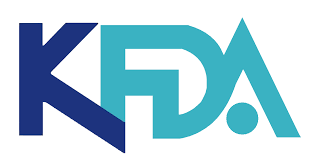Introduction to Medical Device Registration in Korea
This article deals with the Medical Device Registration in Korea. South Korea ranks fourth among countries in the Asia-Pacific region’s healthcare market. The increase in the aging population, and the insurance coverage, along with government initiatives to expand the healthcare market, has made South Korea a prime destination for western medical companies to expand their market to Korea. Korea’s regulatory body is known for its highly sophisticated and efficient process. Medical device products registration is approved by the Ministry of Food and Drug Safety (MFDS), prior to this it was handled by the Korea Food and Drug Administration (KFDA), based on the Medical Device Act. Medical device registration format is similar to the European technical file/design dossier and 510(k) applications. All documents must be submitted in the Korean language.
Classification
All instruments, machines, devices, materials with similar products either used alone or in combination for human beings or animals are considered as Medical Devices in Korea. The Global Harmonization Task Force (GHTF) Classification guidelines, is followed by Medical device to classify from low to high risk categorization and the classification as given below:
- Class I : These medical devices are having low to moderate risk to the patient and/or user, subject to PreMarket Notification.
- Class II : These medical devices are intermediate-risk devices.
- Class III : These medical devices are high-risk devices that are very important to sustaining life. (pacemakers and deep-brain stimulators) are subject to PreMarket Approval (PMA),
- Class IV : These medical devices are high-risk Medical Devices (Coronary Stent) with an S.E. are also subject to Pre-Market Approval (PMA).
Agents
Foreign manufacturers need to appoint an Authorized Local Representative (agent) who will be responsible for post-market surveillance. Only a Korean License Holder (KLH) can apply for product registration.
Documents needed
Documentation and labeling must be provided in Korean language. For device registration in Korea, Clinical Studies are generally not required. For registration of products in Korea, approval in the Country of Origin is not required. For Class I devices premarket Notification including basic device information is required. All Class I applications are accepted upon submission. For Class II medical devices, pre-market approval procedures mainly depend on the device’s predicate with previously approved products. For Class II, III, IV with SER, clinical data details must be included. The clinical data obtained in other markets is accepted by MFDS. Class II III and IV devices must comply with the new safety standards also.
Process
For Class I devices, it’s not mandatory to have the KGMP Certificate, but the pre-market notification must be sent through online to the Competent Authority. To obtain the KGMP Certificate, following the KGMP Audit, For Class II, III and IV devices, it is necessary to submit an application for registration. There is no Validity Limit to the Notification and Registrations. The KGMP Certificate is renewed every three years. The Registration license has no expiry date. For Class I devices, it’s relatively easier and takes about 1-2 months for approval and the process takes anywhere between 9-15 months based on SER Availability.
How Morulaa Can Help
Morulaa HealthTech as a successful regulatory and Import Consultants have delivered High levels of professionalism towards our clients. To understand how the Regulatory process in Korea will help your business, contact us to know more.


Leave a reply
You must be logged in to post a comment.